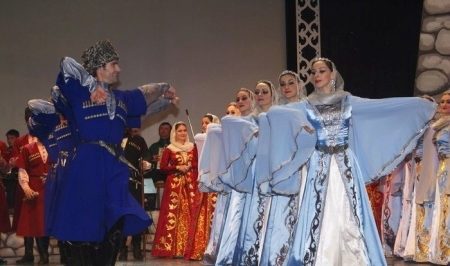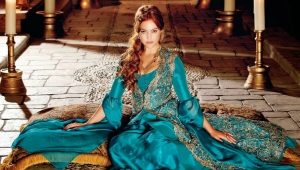Chechen national costume
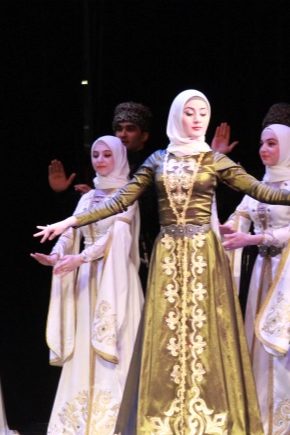
A bit of history
The history and culture of each nation is original and unique, and the national costume is an inseparable part of them. The living conditions of the people, geographical and climatic features, beliefs, socio-economic situation affect how the costume will look and what materials it will be made from.
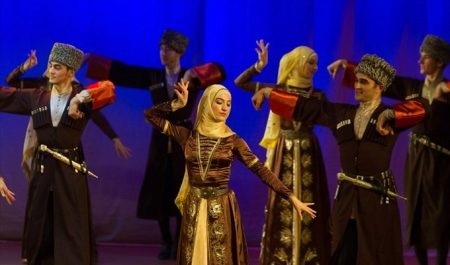
The Chechen national costume is no exception.
Since ancient times, Chechens have been engaged in sheep breeding, and wool, fur, and animal skin were used to make clothes and shoes. Homespun cloth and felt were widely used.
The details of the costume are not only a decorative function, but are also a historical reflection of the life of the Chechens.
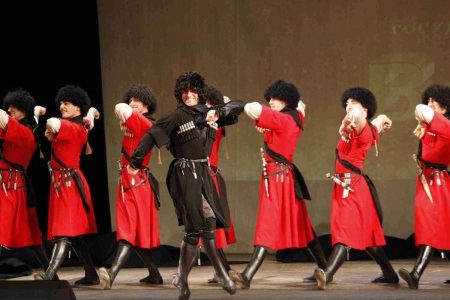
It was convenient for shepherds and warriors to walk in the mountains in soft leather boots.
Daggers and weapons were attached to the belt.
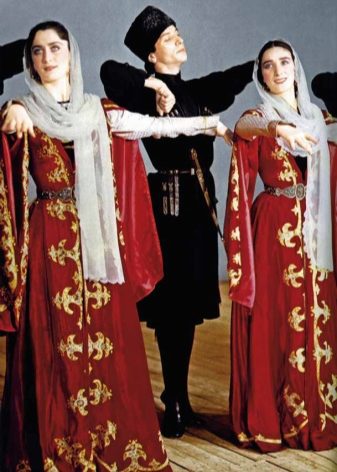
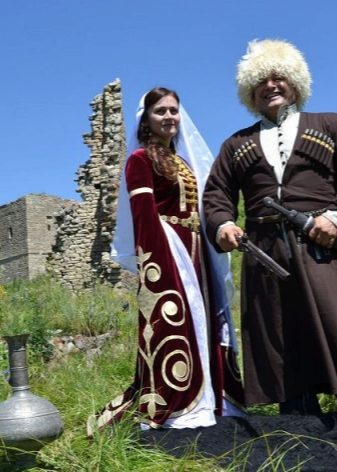
Mandatory in the Chechen national costume is a hat, which is sewn from sheepskin. She is a symbol of masculinity, and touching a hat means insulting a man. At the same time, it perfectly protects against cold or overheating in the bright sun.
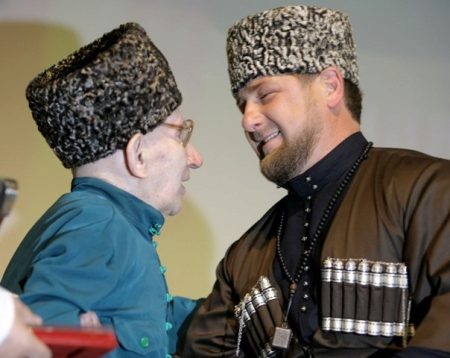
Varieties
The Chechen national costume exists in two versions - male and female.
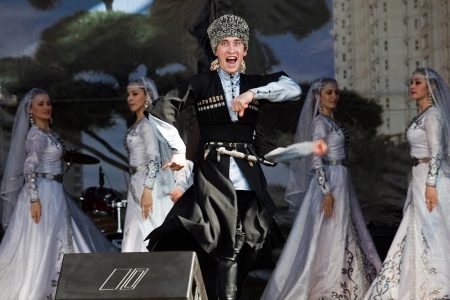
Children's costumes, especially festive ones, were repeated. A slight difference - boys under 14 did not wear daggers.
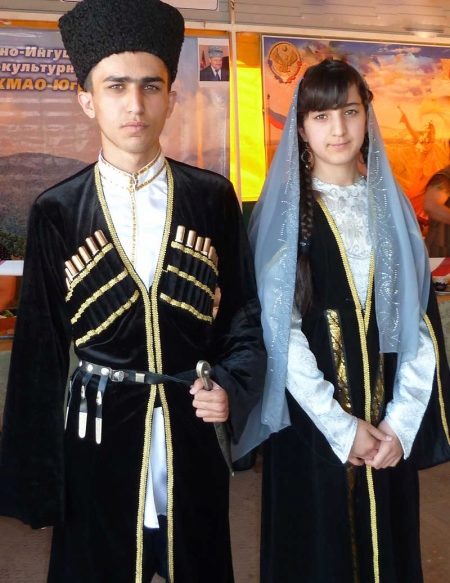
Peculiarities
The basis of the men's suit is a beshmet and trousers, tapering to the bottom.Pants are tucked into boots. Beshmet is a semi-caftan of a special cut, the length of which is about 10 centimeters above the knee.
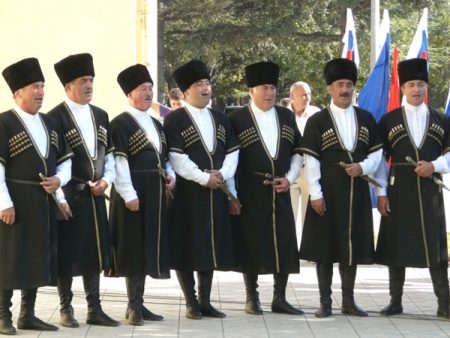
On holidays, a Circassian coat is worn over this half-caftan. It does not have a collar, and it fastens only at the waist.
Its distinguishing feature is the presence of so-called gazyrnits on both sides of the chest - small pockets for weapon charges. Although with the advent of new types of weapons, the need for gazyrnitsa disappeared, they remained on the Circassian coat as a decorative element.

A special detail of the costume is a cloak. It has the appearance of a cape with narrowed shoulders. Its purpose is to protect from the weather, at night it served as a bedding and a blanket.

The components of the women's attire are a tunic dress, an upper dress, a belt and a scarf. The length of the dress-tunic comes to the ankles. Under this dress, women wear wide harem pants, the legs of which are gathered at the ankles. A distinctive feature of the women's dress is bibs and very long sleeves that cover the fingers on the hands. In festive dresses, the length of the sleeves could reach the floor.
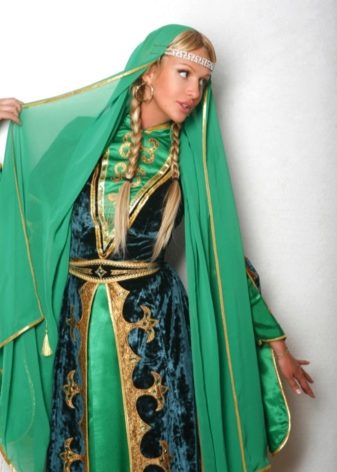
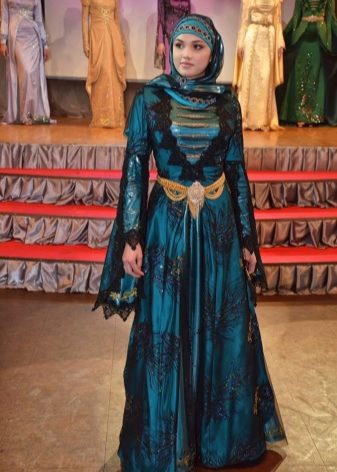
In the manufacture of breastplates, precious metals and stones were used.
The top dress is like a robe or cape. He only has a clasp at the waist to show his bibs.

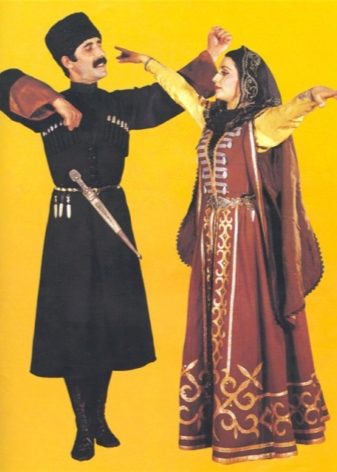
Colors and shades
The color palette of everyday men's wardrobe was usually restrained dark tones - black, gray, brown, brown. Beshmet could be of a different color, enlivening the costume. The festive beshmet was sewn from multi-colored shiny fabrics. The white color in clothes testified to the wealth of a person.
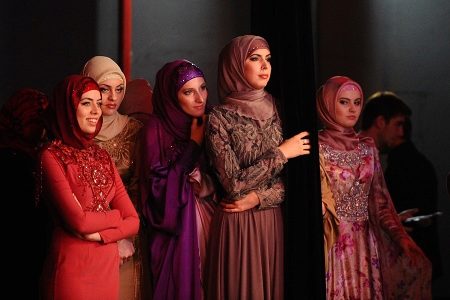
Women's clothing was distinguished by a large variety of colors.
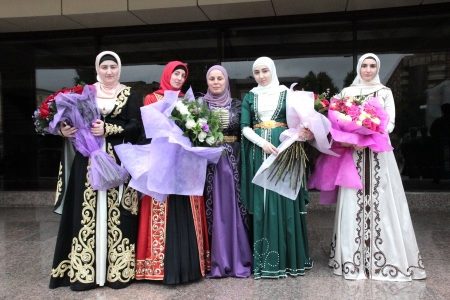
The dress-tunic was, as a rule, plain. But the brightest colors and shades were allowed.
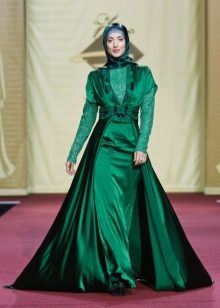
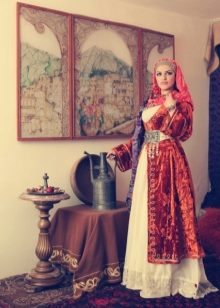

Fabrics and fit
Pants and beshmet were sewn from durable lightweight fabric - they should not have hampered movements. Beshmet is cut according to the figure of a man and fits snugly to the torso. Below the waist line, it becomes extended. Such a cut emphasizes the harmony, strength, masculinity of a man. Narrow comfortable pants taper to the bottom, they are easy to tuck into boots.
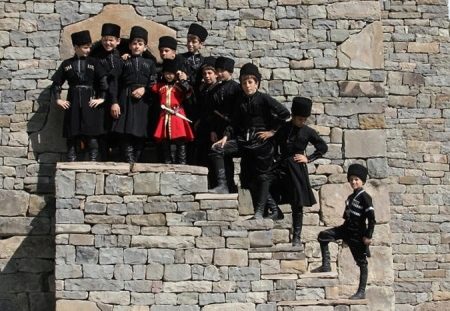
From the neck to the waist, the beshmet is fastened with buttons made of woven straps. The stand-up collar almost completely covers the neck and is fastened with the same buttons. The sleeves of the beshmet are long, tapering towards the wrist and can end with cuffs. They also have similar fasteners.
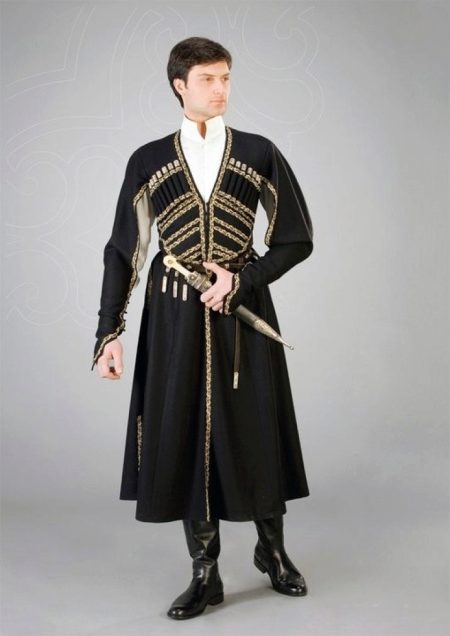
The cut of the Circassian coat coincides with the cut of the beshmet. Since this is a festive type of clothing, it is sewn from more expensive materials. The length of the Circassian is below the knee.
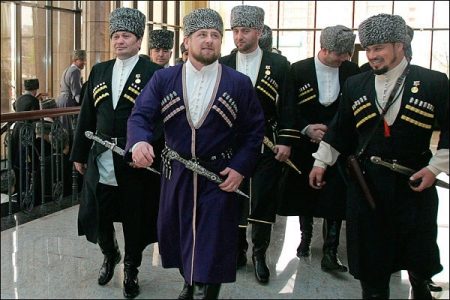
Women's tunic dress was sewn from light cotton fabric or silk. It had a stand-up collar that fastened with a button.
Festive trousers were sheathed at the bottom with silk.

The top dress has a similar cut to the Circassian, differing in floor length. It is oar, it has no collar, it is fastened only at the waist, and the chest remains open.

Luxurious expensive fabrics were used to make the upper dress: satin, brocade, velvet. They were richly decorated with embroidery and braid. They could have folds and frills. However, only young women wore very bright dresses.
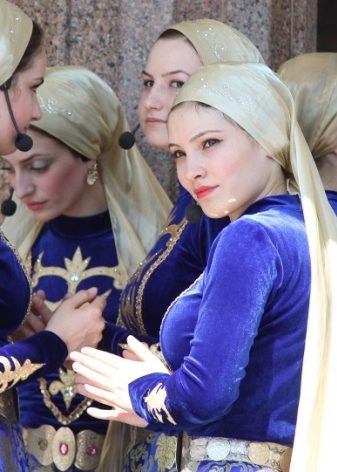
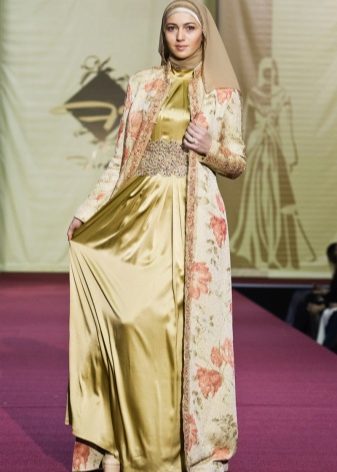
Accessories and shoes
The belt is a mandatory piece of clothing for men and women. Women's were decorated with buckles, silver, precious stones. The most beautiful belts were inherited.
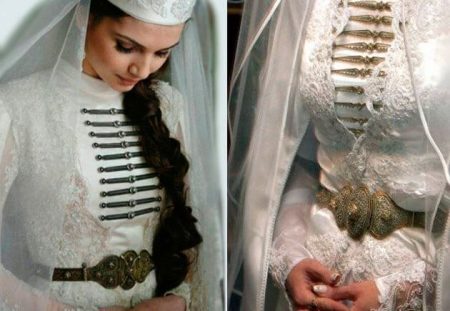
A scarf is part of a woman's attire. For girls, they are made of light fabric. Married women wore a chuhta - a special bag where they put their hair, and put on a scarf with a fringe over it.

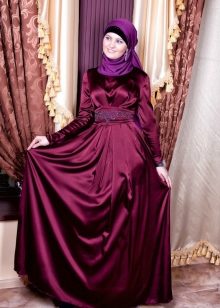

The fair sex has always worn jewelry. These are various bracelets, beads, rings, rings and pendants. Earrings could be in the form of rings. Temporal pendants were common. Buttons on the upper women's dresses can also be considered decoration.
Initially, jewelry was made of bronze, later silver began to be used.
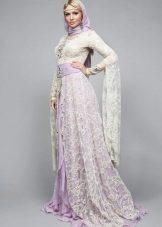
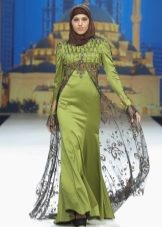


Soft leather boots were traditional everyday shoes for Chechen men. Their length reaches almost to the knees. Wealthy people often wore chuvyaks (a kind of soft shoes without heels), and morocco leggings were put on the legs over the pants.
The sole of the shoe, as a rule, was not hard, which was very convenient for riders and hikers in the mountains.
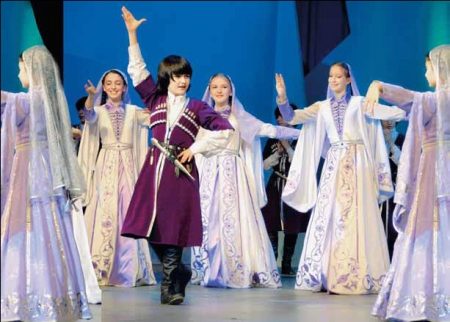
Women's shoes were more diverse. Leather, morocco, felt, wool were used for its manufacture.
They often wore a kind of leather slippers as indoor and outdoor shoes.
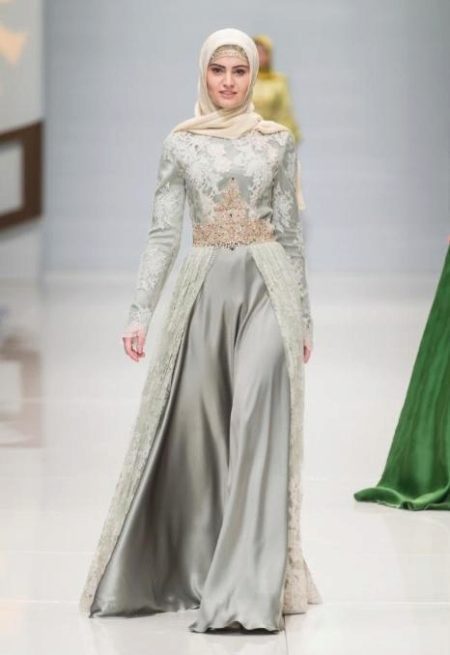
Young women of the fair sex also wore mules. They had hard soles and had heels. Some women wore morocco boots. They were also with heels and could have decorations.
Another type of footwear is boots. They were sewn along the leg from several pieces of leather and looked very elegant.
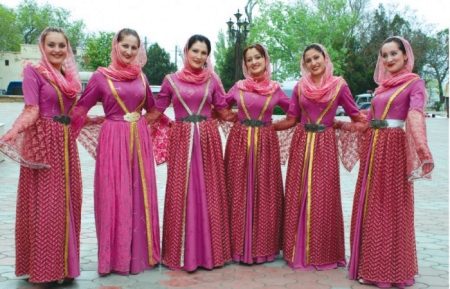
Modern models
To date, the Chechen national costume has not undergone significant changes.
Of course, modern Chechens, especially young people, do not wear it on a daily basis, preferring urban fashion. However, many men wear a national headdress - a hat, remaining faithful to traditions. Older men continue to wear beshmet and Circassian.
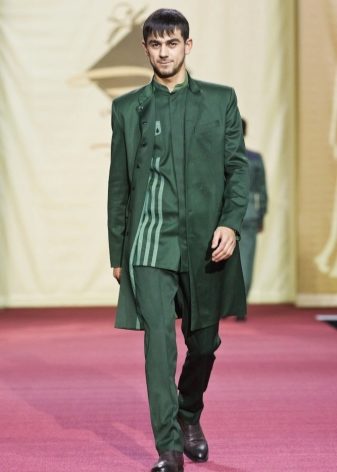
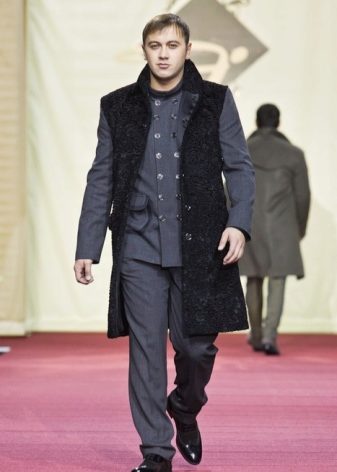
However, national traditions can be traced in modern fashion - Caucasian shirts with a standing collar are common.
In women's fashion, traditions can be traced brighter.On older women, you can see wide dark dresses and harem pants.
Young women and girls dress in modern fashion. But you are unlikely to see a Chechen woman in a short skirt, a dress with open shoulders or a deep neckline.



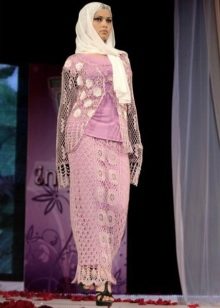
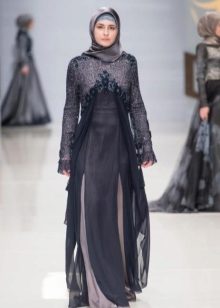
Wedding attire is sewn, as a rule, in the national style. It necessarily consists of an undershirt and an overdress. The latter always has a slit in front, it is richly decorated and embroidered. The main decoration is a silver belt.
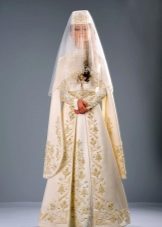



The Chechen national costume is widely used by theater groups as a stage costume. The execution of an incendiary lezginka is unthinkable in any other outfit. And we have a great opportunity to appreciate the beauty of this garment.
